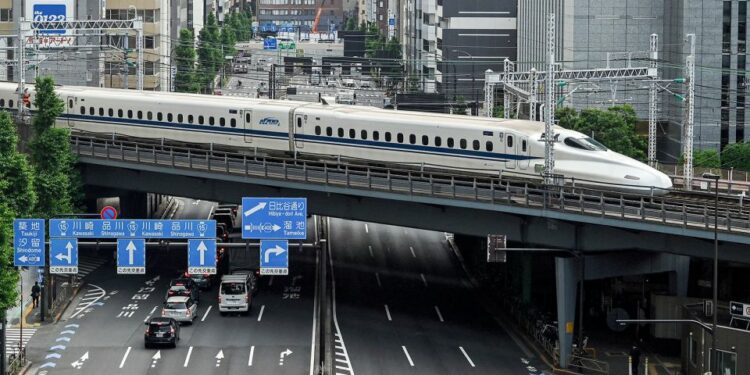A map of Japan’s high-speed rail lines. – jrailpass.com
Japan’s challenging topography and its widely varying climates, from the freezing winters of the north to the tropical humidity farther south, have made Japanese railroad engineers world leaders at finding solutions to new problems as they push the boundaries of rail technology.
Not least of these is seismic activity. Japan is one of the most geologically unstable places on the planet, prone to earthquakes and tsunamis and home to around 10% of the world’s volcanoes.
While this provides arguably the defining image of the Shinkansen – a high-tech modern train flashing past the snow-capped Mount Fuji – it also makes the safe operation of high-speed trains much more difficult.
Despite these factors, not a single passenger has ever been killed or injured on the Shinkansen network due to derailments over its history.
Japan’s high-speed rail revolution
unknown content item
–
The next generation of bullet trains, known as ALFA-X, is currently being tested at speeds of almost 250 mph (400 kph), although the service maximum will be “only” 225 mph.
The defining features of these and other recent Shinkansen trains are their extraordinarily long noses, designed not to improve their aerodynamics, but primarily to eliminate sonic booms caused by the “piston effect” of trains entering tunnels and forcing compression waves out of the other end at supersonic speeds.
This is a particular problem in densely populated urban areas, where noise from Shinkansen lines has long been a source of complaints.
The experimental ALFA-X train also features new safety technology designed to cut down on vibration and noise and reduce the likelihood of derailments in major earthquakes.
More than 10 billion passengers have now been carried in speed and comfort by the trains, the predictability of the operation making high-speed travel seem routine and largely taken for granted.
High-speed rails around the world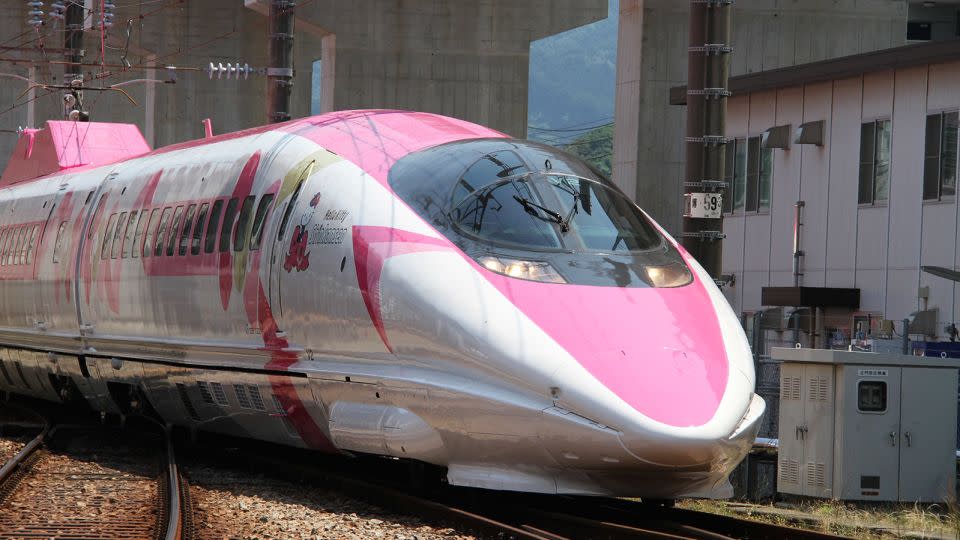
Two great Japanese inventions, high speed trains and Hello Kitty, combined. – Courtesy West Japan Railway/Sanrio Co. Ltd.
In 2022, more than 295 million people rode on Shinkansen trains around Japan.
Little wonder then that many other countries have followed Japan’s example and built new high-speed railroads over the last four decades.
Perhaps the best-known of these is France, which has been operating its Train à Grand Vitesse (TGV) between Paris and Lyon since 1981.
Like Japan, France has successfully exported the technology to other countries, including Europe’s longest high-speed network in Spain, as well as Belgium, South Korea, the United Kingdom and Africa’s first high-speed railroad in Morocco.
France’s TGV network has been phenomenally successful, slashing journey times over long distances between the country’s big cities, creating additional capacity and making high-speed travel accessible and affordable, even mundane for regular commuters.
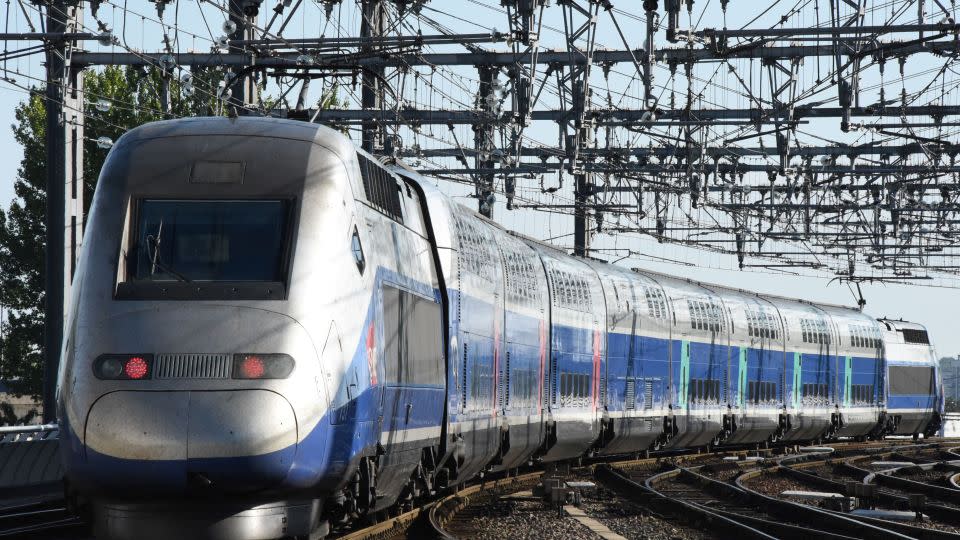
A picture taken on July 2, 2017 shows the first official train of the new TGV high speed train line linking Paris to Bordeaux. – Mehdi Fedouach/AFP/Getty Images
Italy, Germany, the Netherlands, Taiwan, Turkey and Saudi Arabia all now operate trains on dedicated lines linking their major cities, competing directly with airlines on domestic and international routes.
In the UK, high-speed Eurostar trains run from London to Paris, Brussels and Amsterdam, but “High Speed 2,” a second route running north from London has been mired in controversy. What was once billed as a landmark mega-project to power an interconnected Britain into the oncoming century has now been reduced to a 140-mile link that will barely improve on existing services.
For the moment, the closest equivalent to the bullet train for British passengers are new Hitachi-built “Intercity Express Trains” using technology derived from their Japanese cousins, although these only run at a maximum of 125 mph.
Meanwhile, India and Thailand are planning extensive high-speed rail networks of their own.
China’s railway rise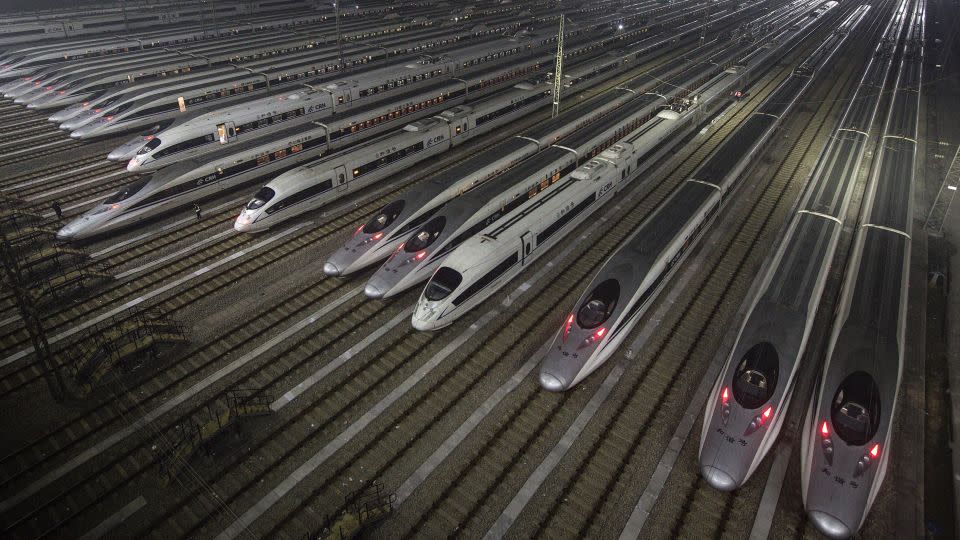
Hundreds of high-speed trains at a maintenance base wait to set out on January 20th, 2018 in Wuhan, China. – Wang He/Getty Images
In recent years, it’s China that has eclipsed the rest of the world, using its economic might to create the world’s longest high-speed railroad network.
According to the country’s national railway operator, the total length stands close to 28,000 miles as of the end of 2023.
More than just a mode of transportation, these lines provide fast links across this vast country, stimulating economic development and cementing political and social harmonization.
Using technology initially harvested from Japan and Western Europe, and subsequently developed by its increasingly sophisticated railroad industry, China has quickly made itself a leading player in high-speed rail.
This looks set to continue as it develops magnetically levitating (Maglev) trains capable of running at almost 400 mph.
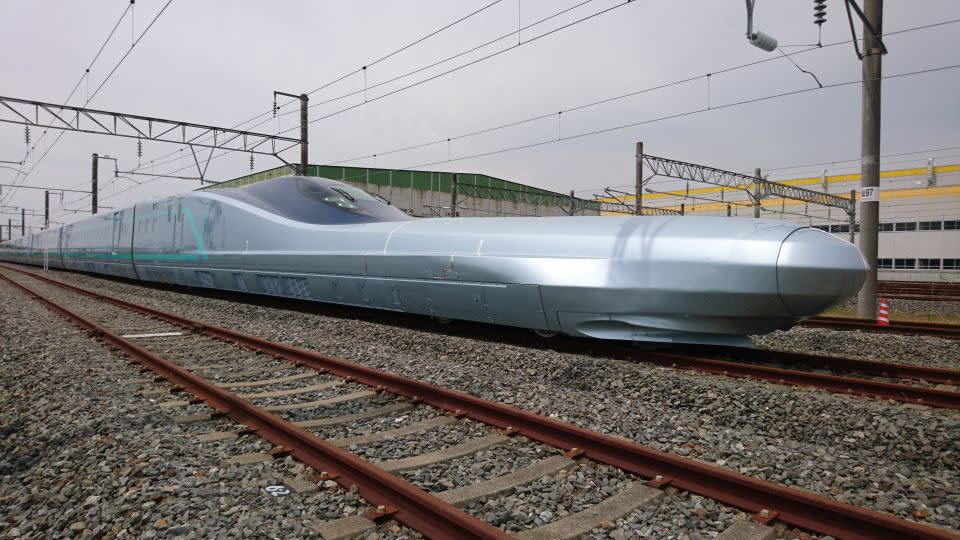
Japan’s experimental ALFA-X train. – JR EAST
Japan has had its own experimental Maglev line since the 1970s and is constructing a 178-mile line between Tokyo and Nagoya.
Due to open in 2034, it will eventually extend to Osaka, cutting the journey time to the latter to just 67 minutes.
“The Shinkansen is clearly much more than a means of transportation,” says British academic Christopher P. Hood, author of “Shinkansen: From Bullet Train to Symbol of Modern Japan.”
“It was the most potent symbol of Japan’s postwar reconstruction and emerging industrial might and as it continues to evolve is likely to be so for many years to come.”
Although the iconic blue and white 0-Series trains of 1964 are long since retired, they still form many people’s image of what a bullet train looks like.
Their remarkable descendants are an indispensable part of the transport infrastructure in Japan and many other countries around the world and, as environmental concerns make people think twice about flying, they could be about to experience a further resurgence, prompting a new golden age for the railroad.
For more CNN news and newsletters create an account at CNN.com
Source link : http://www.bing.com/news/apiclick.aspx?ref=FexRss&aid=&tid=66fb92ac2c854a4e9a2b38f2fbff3eea&url=https%3A%2F%2Fwww.aol.com%2Fnews%2Fjapan-shinkansen-bullet-trains-changed-044658529.html&c=10689035301272929279&mkt=de-de
Author :
Publish date : 2024-09-30 22:53:00
Copyright for syndicated content belongs to the linked Source.

